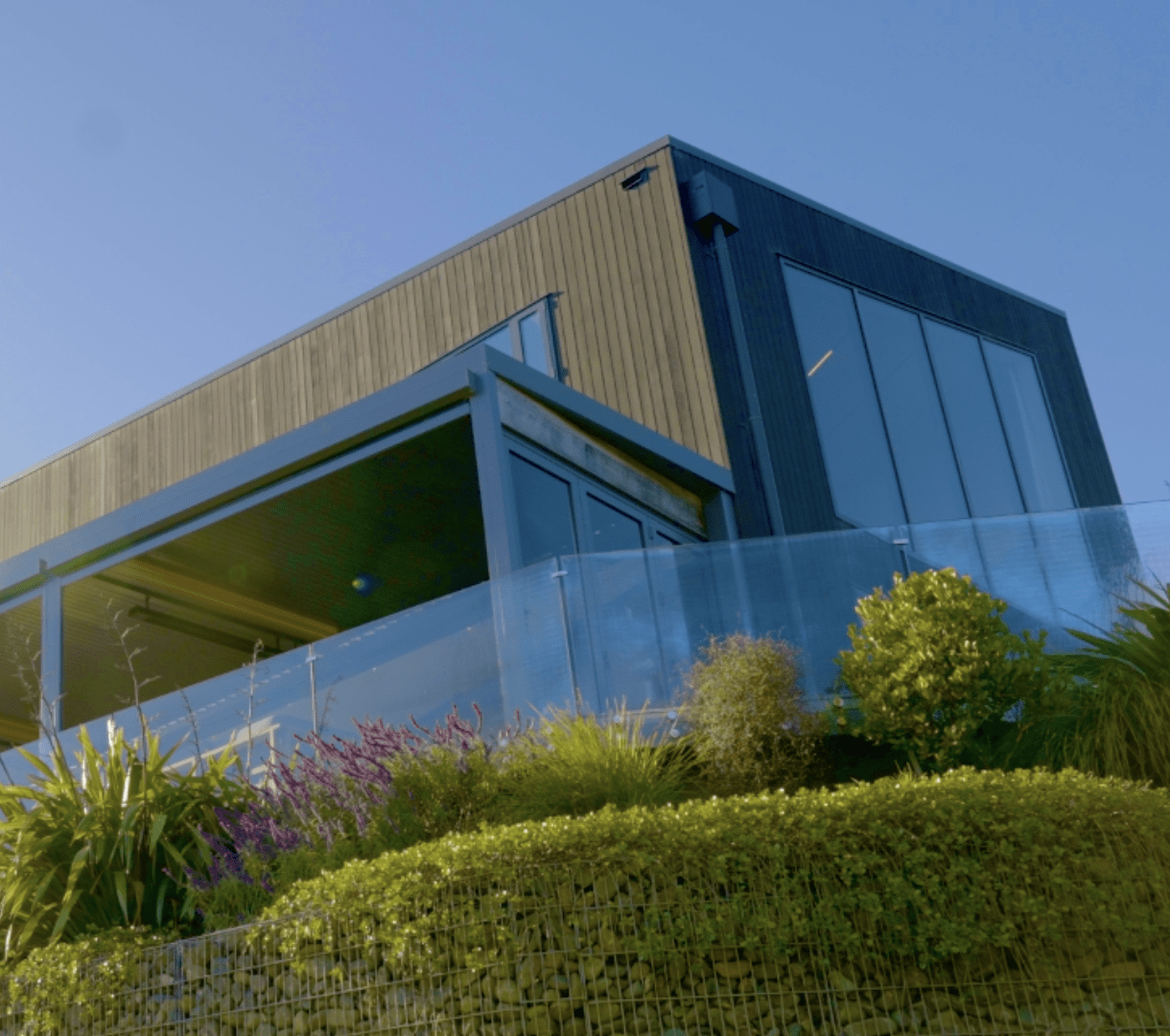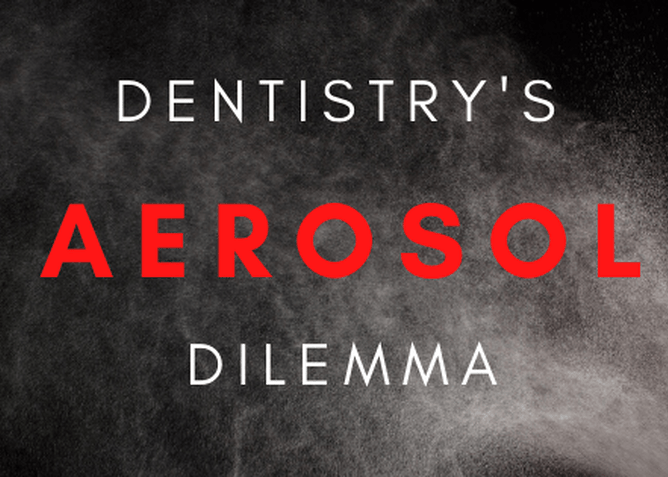Dentistry, as we knew it in 2019, has come to a grinding halt.
SARS-CoV-2 (or COVID-19) has rendered most global practices closed, or limited to emergency care with a firm regulatory advisory - no aerosol. What does that mean for dental healthcare professionals and dentistry? When the rest of the world goes back to work, will we still be facing limited practice and an aerosol dilemma?
Dentists have been managing aerosol risk for years. Dental healthcare professionals (DHCP) have always been exposed to airborne micro-organisms and harmful particulate through splatter and aerosol. The New York Times identified our risk in a recent article.
Despite this, transmission of infectious micro-organisms has remained low amongst dental personnel. Vaccination, healthy patients, personal protective equipment (PPE), 4-handed dentistry and high volume evacuation have played a role.
The industry adopted universal precautions in 1985, introduced by the CDC to manage the HIV epidemic, making the assumption that every patient attending was potentially HIV positive. It was the best risk management strategy we could have taken to manage a number of infectious micro-organisms, such as Hepatitis B, M. tuberculosis and influenza. All aspects of sterilisation, PPE use and infection control were elevated across the industry.
Dental healthcare professionals live in PPE every day and our knowledge of transmissable diseases and cross-contamination is well taught and understood. We are aware of droplet distribution, and the concept of red (contaminated) versus green (clean) zones.
The modern practice employs universal precautions which encompass:
- Autoclavable or single use items
- Strict workflows that include cassettes, washing, vibrating, bagging, barcodes, tracking, documentation, testing and validation daily.
- Chemical agents that kill organisms on surfaces.
- Staff who are skilled professionals inducted and trained in universal precautions.
- Well documented protocols and audits.
- Protection with PPE - masks, eyeware, gloves and gowns.
This has been an effective strategy for a variety of infectious organisms to date.
Is COVID-19 posing a greater risk of infection than other micro-organisms and will traditional 'gold standard' PPE and procedures be adequate protection for the dental healthcare professional?
How has dentistry changed with COVID-19?
COVID-19 is different from SARS but shares the same human host receptor, has a higher binding affinity and is considered more contagious, with higher mortality rates than influenza. Infections and deaths have been reported among medical personnel and healthcare workers. Data about COVID-19 infections amongst dental healthcare professionals in private practice settings is scarce. Our risk mitigation strategy has been to ban aerosols or simply shut offices to avoid contact with infected patients.
COVID-19 is having it's biggest impact on the business and safety of dentistry by raising concerns about dental aerosols for dental healthcare professionals. It's very hard to practise dentistry, and run a productive dental business, without generating aerosols.
The fine droplet mist that emanates from an air turbine or a ultrasonic scaler spreads a microbiological load from the patient's mouth to the masked clinician. Traditional PPE, barrier mechanisms like rubber dam and high volume evacuation (HVE) have always been dentistry's protection. Will this be sufficient in our new normal and how are we looking at dentistry with new, biosafety parameters?
- We are shifting our focus back to universal precautions and mapping new guidelines.
- The concept of Slow Dentistry ® is gathering momentum.
- PPE suitability is being reviewed.
- Surface chemical contact time has been expanded.
- We triage our patients differently, filtering those deemed too high risk to treat. We rely on questions, symptoms and trust.
In a perfect future world, we would distinguish between those who are infectious and those who are not. This won't be our last coronavirus and while rapid antibody tests would be our best benchmark, they remain an unreliable indicator at this time. The New York Times reported the uncertainty of the 'Wild West' of rapid tests, as 70 companies fast-track production while the Food and Drug Administration decided to waive initial review of validation data.
Evidence should drive our decision-making and data has been difficult to obtain when COVID-19 has created rapid disruption, and is still being understood.
- There has been anecdotal and pre-publication data shared by the medical and dental community.
- There has been little peer-reviewed modelling about dental aerosol and PPE suitability in the context of COVID-19 at this time.
- Our evidence base comes from studies that have tested products and reviewed other micro-organisms in a dental or medical setting - sister coronaviruses (SARS & MERS), influenza and M.tuberculosis.
- The genome for the COVID-19 Wuhan strain has been identified as a new strain with approximately 70% genetic similarity to the SARS-CoV. While we can look to data on SARS, this is not the same virus.
We can look to the past for data. Good science doesn't mean that 'something based on the past assures us that it might not happen in the future'.
That doesn't mean we live in fear. Instead we encourage evidence and in the interim play the risk management game. Are we safe enough? Are we informed enough? Based on what we know to date, what is the risk?
The questions every dental clinician globally will be asking in the current pandemic, and the evidence we should be seeking is:
- Are we seeing evidence of COVID-19 infections amongst dental personnel when approved PPE is used for aerosol generating procedures?
- What dose is required to innoculate dental teams and what is the infectious potential from the oral cavity in the asymptomatic or pre-symptomatic individual?
- Some dental procedures require lengthy appointments involving sustained aerosol exposure. How does that change the risk?
- How do oral aerosol viral titres change with contact time and infection state of the patient?
- How does a mechanically-driven dental aerosol compare with ‘violent’ expiratory events like sneezing and coughing, or experimental nebuliser-driven aerosols in in-vitro modelling?
- Are dental handpiece and PPE manufacturers reviewing droplet transport analysis and aerosol fluid dynamics in the context of COVID-19?
- Are live bioaerosol exposure tests and sampling being carried out in the laboratory or dental surgery for COVID-19?
- We know the impact of a pre-rinse with H2O2 significantly lowers the oral viral load. Would a continuous stream of oxidant through a dental handpiece or scaler, impact viral load sufficiently to reduce the risk of transmission? Examples include hypochlorite, ozone, chlorine dioxide, hydrogen peroxide with doses adjusted to mitigate viral load and at a level a patient can’t taste, or harm soft tissues.
- Can additional external evacuation or air filtering devices have sufficient impact on the transport and physics of aerosol movement?
- How does host sensitivity alter the risk and should dental healthcare professionals with co-morbidities resume aerosol based dentistry?
Never before has the marriage between aerosol scientists, virologists, manufacturers and dentists been more important.
I don't have the answers and will keep searching for them. Like all of my peers globally, I'm eager to return to work to serve my team and patients. This love of dentistry is tinged with an awareness of the unknown.
This dilemma will require a collaborative brainstorm with good data to quantify the risks. In the meantime it becomes a calculated risk based on past evidence and theoretical extrapolation.
New Zealand has adopted an elimination strategy to date, and the nation awaits a decision to emerge from or sustain lockdown on April 22. Dentists will be looking for guidance on practising in a new environment, and a safe 'new normal' post COVID-19.
I look forward to feedback and comments from all related sectors: microbiology, aerosol science, chemistry, industrial design and dental manufacturing. Please feel free to email me directly, or contribute to the conversation. I would welcome your expertise, ideas and debate.
Acknowledgement: Thank you to Sean Shepperson for his knowledge of chemistry and physics and the application to clinical considerations.
Further reading on PPE, aerosols and COVID-19:
- Sima Asadi, Nicole Bouvier, Anthony S. Wexler & William D. Ristenpart (2020) The coronavirus pandemic and aerosols: Does COVID-19 transmit via expiratory particles?, Aerosol Science and Technology, DOI: 10.1080/02786826.2020.1749229
- Loeb M, Dafoe N, Mahony J, et al. Surgical Mask vs N95 Respirator for Preventing Influenza Among Health Care Workers: A Randomized Trial. JAMA. 2009;302(17):1865–1871. doi:10.1001/jama.2009.1466
- Yuen, K., Ye, Z.-., Fung, S. et al. SARS-CoV-2 and COVID-19: The most important research questions. Cell Biosci 10, 40 (2020). https://doi.org/10.1186/s13578...
- Coulthard, P. Dentistry and coronavirus (COVID-19) - moral decision-making. Br Dent J 228, 503–505 (2020). https://doi.org/10.1038/s41415...
- Health and Safety Executive. Evaluating the protection afforded by surgical masks against influenza bioaerosols: Gross protection of surgical masks compared to filtering facepiece respirators. 2008. at https://www.hse.gov.uk/research/rrpdf/rr619.pdf.
- New Zealand’s elimination strategy for the COVID-19 pandemic and what is required to make it work | OPEN ACCESS Michael G Baker, Amanda Kvalsvig, Ayesha J Verrall, Lucy Telfar-Barnard, Nick Wilson https://www.nzma.org.nz/journal-articles/new-zealands-elimination-strategy-for-the-covid-19-pandemic-and-what-is-required-to-make-it-work
- Wilder-Smith A, Chiew CJ, Lee VJ. Can we contain the COVID-19 outbreak with the same measures as for SARS? The Lancet. Infectious Diseases. 2020 Mar DOI: 10.1016/S1473-3099(20)30129-8.

